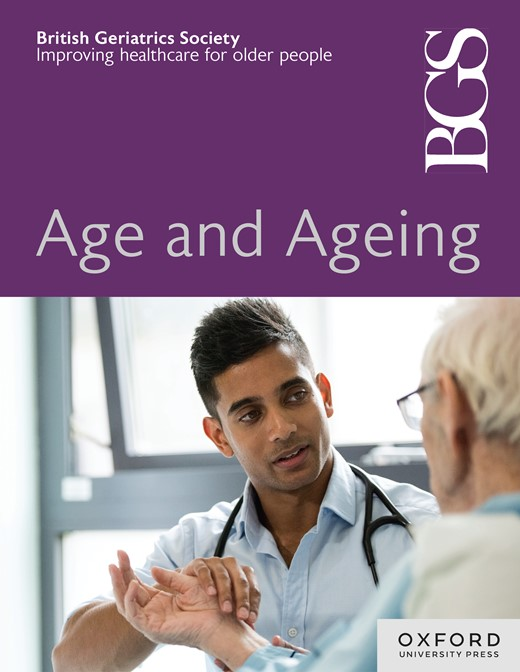3176 .为生活在英格兰西北部农村地区的帕金森患者提供的服务存在差异
IF 6
2区 医学
Q1 GERIATRICS & GERONTOLOGY
引用次数: 0
摘要
作为特发性帕金森病(IPD)患病率研究的一部分,在当地专家服务的照顾下,确定了生活在北坎布里亚郡的721个人的电子记录。这项研究旨在了解个人如何获得服务,以确定趋势和障碍。方法通过电子病历检索,确定患者与医生和帕金森病专科护士(PDNS)的接触频率。他们在过去3个月、6个月或12个月内有过接触,具体是通过电话还是面对面。我们记录了与三级转诊服务的接触,以考虑先进的治疗方法。农村地区被定义为居住在少于1万人的定居点,最贫困地区和最不贫困地区,被定义为最贫困和最贫困的地区。结果近12个月内与专科医生有过接触的占93.1%。在过去六个月内收到PDNS联系的人数为194人(26.9%),低于全国水平。这一人群中只有23人(3.2%)正在接受或考虑接受高级治疗。农村和城市地区在服务接触方面没有差别。与最贫困地区相比,最贫困地区的人数在过去12个月内没有服务联系的可能性在统计上显著增加,37人(74.0%)(95% CI 61.8-86.2)比13人(26.0%)(95% CI 13.8-38.2)。与最贫困地区相比,最贫困地区面对面接触PDNS的人数显著减少,为48人(38.4%)(95% CI 29.9-46.90),而最贫困地区为77人(61.6%)(95% CI 53.1-77.1)。结论最贫困地区和最贫困地区在服务接触方面的差距更大,而不是生活在最偏远或农村地区。希望结果将告知质量改进工作,以改善整个北坎布里亚郡公平的服务提供。本文章由计算机程序翻译,如有差异,请以英文原文为准。
3176 Disparities in Parkinson's service provision for those living in a rural area of North West England
Introduction As part of an Idiopathic Parkinson’s disease (IPD) prevalence study, electronic records were identified for 721 individuals living in North Cumbria under the care of the local specialist service. This study aimed to understand how individuals access services, with a view to identifying trends and barriers. Methods An electronic record search was performed to identify frequency of contact with a doctor and Parkinson’s nurse specialist (PDNS). Contact within the last three, six or 12 months, and whether this was via telephone or face-to-face was detailed. We recorded contact with tertiary referral services for consideration of advanced therapies. Rural areas were defined as living in a settlement of less than 10,000 people, and most and least deprived areas, defined as the lowest five and highest five deciles of deprivation retrospectively. Results In total 93.1% had contact with a specialist within the last 12 months. The number receiving contact from a PDNS within the last six months was 194 (26.9%), lower than seen nationally. Only 23 (3.2%) of this population were receiving/considered for advanced therapies. There was no difference seen in service contact between rural and urban areas. Numbers in the most deprived areas were statistically significantly more likely to not have had service contact in the last 12 months compared to the least deprived areas, 37 (74.0%) (95% CI 61.8–86.2) compared to 13 (26.0%) (95% CI 13.8–38.2). There were statistically significantly fewer numbers with face-to-face PDNS contact in the most, compared to the least deprived areas, 48 (38.4%) (95% CI 29.9–46.90) compared to 77 (61.6%) (95% CI 53.1–77.1). Conclusion Greater disparities in service contact were seen between the most and least deprived areas, rather than living in the most remote or rural areas. It is hoped results will inform quality improvement work to improve equitable service provision throughout North Cumbria.
求助全文
通过发布文献求助,成功后即可免费获取论文全文。
去求助
来源期刊

Age and ageing
医学-老年医学
CiteScore
9.20
自引率
6.00%
发文量
796
审稿时长
4-8 weeks
期刊介绍:
Age and Ageing is an international journal publishing refereed original articles and commissioned reviews on geriatric medicine and gerontology. Its range includes research on ageing and clinical, epidemiological, and psychological aspects of later life.
 求助内容:
求助内容: 应助结果提醒方式:
应助结果提醒方式:


